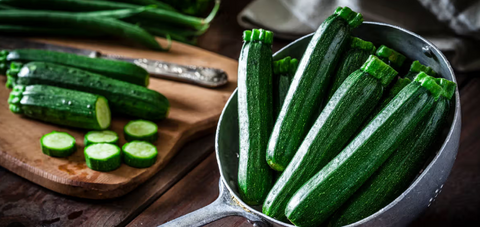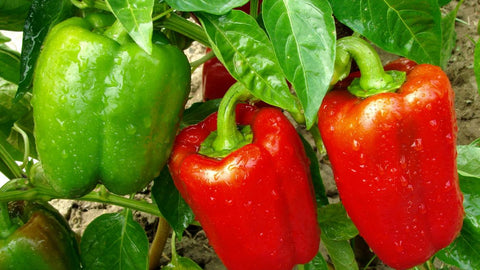Are you ready to embark on a journey of discovery and delight in your own backyard? Look no further than the rewarding adventure of growing summer squash and zucchini. Picture vibrant hues of green and yellow peeking through lush foliage, promising a harvest of flavorful abundance. From the moment you sow the seeds to the first bite of a freshly picked zucchini, every step of the journey is filled with excitement and fulfillment. Join us as we delve into the intricacies of cultivating these versatile vegetables, and unleash your inner gardener. Let's dive in and explore the wonders of homegrown summer squash and zucchini together.

Choosing the Right Varieties
Different Types of Summer Squash
Summer squash comes in a delightful array of shapes, sizes, and colors, each offering its own unique flavor profile and culinary potential. From the classic yellow crookneck to the slender zephyr and scallop-edged pattypan, there's a summer squash variety to suit every taste and garden space.
Varieties of Zucchini
Zucchini, with its tender texture and mild flavor, is a staple in many home gardens and kitchens. Choose from traditional green varieties or experiment with golden or striped zucchini for added visual appeal and culinary creativity.
Preparing Your Garden
Selecting a Suitable Location
Find a sunny spot in your garden with well-drained soil and good air circulation to provide the ideal growing conditions for summer squash and zucchini. Consider factors such as proximity to water sources and protection from strong winds to ensure the success of your plants.
Soil Preparation and Amendments
Prepare your soil by incorporating organic matter such as compost or aged manure to improve fertility and structure. Conduct a soil test to assess nutrient levels and pH, and adjust as needed with amendments such as lime or sulfur to create an optimal growing environment for your vegetables.
Planting Timing
Time your planting carefully to coincide with the warm temperatures of late spring or early summer, once the threat of frost has passed and soil temperatures have warmed to around 60°F (15°C). This will ensure that your summer squash and zucchini plants get off to a healthy start and thrive throughout the growing season.
Planting Summer Squash and Zucchini
Direct Seeding vs. Transplanting
Decide whether to sow seeds directly into the garden or start seedlings indoors for later transplanting. Direct seeding is straightforward while transplanting allows for earlier harvests and greater control over plant spacing and placement.
Proper Spacing and Depth
Space your summer squash and zucchini plants according to their mature size, typically 18 to 36 inches apart depending on the variety. Plant seeds at a depth of 1 to 2 inches, ensuring adequate soil contact for germination and establishment.
Watering Needs
Provide consistent moisture to your plants throughout the growing season, aiming for about 1 inch of water per week, either from rainfall or irrigation. Water deeply and evenly, avoiding overhead watering which can promote fungal diseases, and mulch around plants to retain soil moisture and suppress weeds.

Essential Care Tips
Mulching Techniques
Apply a layer of organic mulch such as straw, shredded leaves, or grass clippings around your summer squash and zucchini plants to conserve moisture, regulate soil temperature, and reduce weed competition. Mulch also helps to protect the soil surface from erosion and compaction.
Fertilizing Strategies
Feed your plants with a balanced fertilizer formulated for vegetables to provide essential nutrients for healthy growth and prolific fruit production. Apply fertilizer according to package instructions, and consider supplementing with compost or organic amendments to further enrich the soil.
Pest and Disease Management
Monitor your plants regularly for signs of pests or diseases, such as aphids, squash bugs, or powdery mildew, and take action promptly to prevent damage. Use integrated pest management techniques such as hand-picking pests, applying botanical insecticides, or using row covers to protect plants from pests and diseases.
Maximizing Yield
Pruning for Productivity
Prune your summer squash and zucchini plants selectively to remove any damaged or diseased foliage, improve air circulation, and encourage the development of healthy fruits. Pruning also helps to control plant size and shape, and can increase overall yield by redirecting energy into fruit production.
Pollination Practices
Ensure proper pollination of your squash plants by attracting pollinators such as bees, butterflies, and other beneficial insects to your garden. Plant a diverse array of flowering plants to provide food and habitat for pollinators, and avoid the use of pesticides that may harm them.
Harvesting Timing
Harvest your summer squash and zucchini when they are young and tender, typically when they reach 4 to 8 inches in length depending on the variety. Use a sharp knife or pruner to cut the fruits from the vine, taking care not to damage the plant or adjacent fruits, and harvest regularly to encourage continued production.
Culinary Delights: Recipes to Try
Grilled Zucchini and Summer Squash Skewers
Thread chunks of zucchini and summer squash onto skewers with cherry tomatoes, bell peppers, and onions, then grill until tender and lightly charred. Serve as a colorful and flavorful side dish or vegetarian entree, drizzled with olive oil and sprinkled with herbs and spices.
Zucchini Pasta with Pesto Sauce
Create a nutritious and delicious alternative to traditional pasta by spiralizing zucchini into "zoodles" and tossing it with homemade pesto sauce. Garnish with grated Parmesan cheese and toasted pine nuts for added flavor and texture, and serve as a light and refreshing summer meal.
Stuffed Summer Squash Blossoms
Fill delicate squash blossoms with a savory mixture of ricotta cheese, herbs, and seasonings, then lightly batter and fry until golden and crispy. Serve as an elegant appetizer or side dish, accompanied by a tangy tomato sauce or creamy herb dip for dipping.

Preserving the Harvest
Freezing Techniques
Extend the shelf life of your summer squash and zucchini harvest by blanching and freezing excess fruits for later use. Simply blanch sliced or diced squash in boiling water for a few minutes, then plunge into ice water to stop the cooking process before freezing in airtight containers or freezer bags.
Canning Methods
Explore the art of home canning to preserve the flavor and freshness of your summer squash and zucchini in jars. Experiment with pickling recipes, relishes, and chutneys to capture the essence of the season and enjoy your harvest year-round.
Pickling Ideas
Infuse summer squash and zucchini with bold flavors and tangy acidity by pickling them in a brine of vinegar, water, salt, and spices. Customize your pickles with garlic, dill, mustard seeds, or chili peppers to create unique flavor combinations that complement a variety of dishes.
Troubleshooting Common Issues
Blossom End Rot
Prevent blossom end rot, a common disorder caused by calcium deficiency, by maintaining consistent soil moisture and pH levels. Mulch around plants to retain moisture and apply calcium supplements or amendments as needed to ensure proper fruit development.
Powdery Mildew
Control powdery mildew, a fungal disease that thrives in warm, humid conditions, by promoting good air circulation and avoiding overhead watering. Apply fungicidal sprays containing sulfur or potassium bicarbonate preventively or at the first sign of infection to protect your plants.
Squash Vine Borers
Protect your squash plants from squash vine borers, destructive pests that tunnel into stems and cause wilting and decline, by monitoring plants regularly for signs of infestation. Use row covers to exclude adult moths from laying eggs and apply biological controls such as parasitic nematodes or predatory wasps to manage larval populations.
Sustainable Practices
Composting Unused Plant Material
Recycle spent summer squash and zucchini plants by composting them along with other organic matter to create nutrient-rich compost for your garden. Combine plant material with nitrogen-rich materials such as grass clippings or kitchen scraps to speed up the decomposition process and reduce waste.
Water Conservation Tips
Conserve water in the garden by using water-efficient irrigation methods such as drip irrigation or soaker hoses, which deliver water directly to the root zone while minimizing runoff and evaporation. Collect rainwater in barrels or cisterns for supplemental irrigation during dry spells, reducing the need for municipal water sources.
Organic Pest Control Methods
Embrace organic pest control methods to manage insect pests without the use of synthetic pesticides that may harm beneficial insects and disrupt ecosystem balance. Utilize natural predators, botanical insecticides, and physical barriers to deter pests and protect your summer squash and zucchini crops naturally.

Enjoying the Fruits of Your Labor
Embracing the Joy of Gardening
Celebrate the rewards of gardening by savoring the sights, scents, and tastes of your summer squash and zucchini harvest. Share your bounty with friends and family, and take pride in knowing that you've nurtured your own fresh, homegrown produce from seed to table.
Culinary Creativity with Fresh Produce
Explore the culinary possibilities of your summer squash and zucchini harvest, experimenting with new recipes and flavor combinations to delight your taste buds and nourish your body. From simple salads and stir-fries to gourmet entrees and desserts, let your imagination be your guide as you create delicious dishes with garden-fresh ingredients.
Health Benefits of Homegrown Vegetables
Enjoy the health benefits of homegrown vegetables, which are packed with essential vitamins, minerals, and antioxidants that promote overall well-being and vitality. From improved digestion and immunity to enhanced energy and vitality, incorporating fresh produce into your diet is a delicious way to support your health and happiness.
Conclusion
In conclusion, growing your own summer squash and zucchini offers a rewarding journey filled with discovery, creativity, and satisfaction. By following these tips and techniques, you can cultivate a thriving garden that yields an abundance of fresh, flavorful produce to enjoy throughout the season and beyond. So seize the opportunity to savor the season, and let your garden be your guide to culinary delight and sustainable living.









